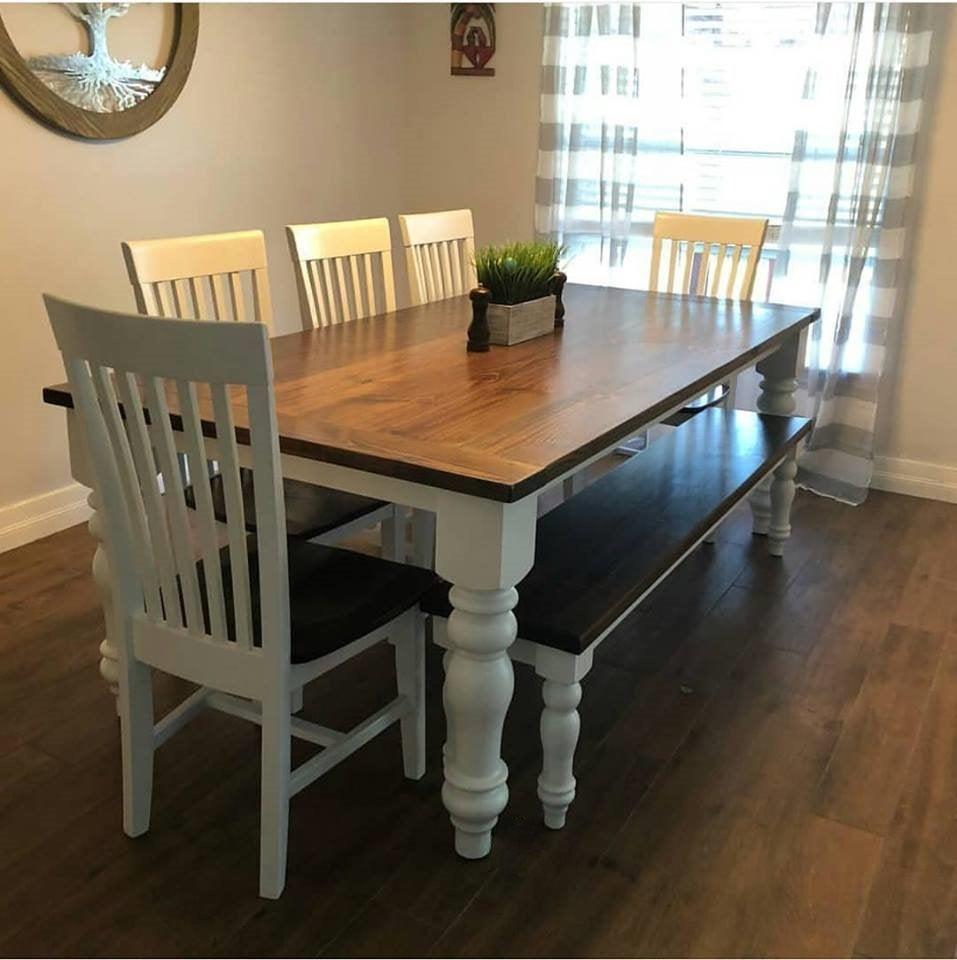Leading Fads in Dining Room Table Legs to Boost Your Eating Room
Leading Fads in Dining Room Table Legs to Boost Your Eating Room
Blog Article
A Comprehensive Take A Look At Table Leg Styles: Locating the Perfect Suit
Choosing the appropriate eating table leg design is essential for both aesthetic appeal and sensible functionality. For those with bigger tables, trestle legs make certain sturdy assistance, whereas hairpin legs introduce a mid-century contemporary vibe with their minimal layout. The x-shaped legs blend contemporary design with improved security.
Typical Four Legs
Among the different types of dining table leg styles, the conventional four-leg style stays a classic choice for numerous households. 4 legs offer well balanced assistance, ensuring the table continues to be stable and capable of bearing significant weight (dining room table legs).
From an aesthetic perspective, the conventional four-leg design can be easily adjusted to different indoor designs. Whether crafted from wood, steel, or a mix of materials, these legs can be delicately carved, smooth and minimalistic, or anything in between. Their convenience enables them to complement both rustic and contemporary setups perfectly.
Furthermore, the straightforward framework of the four-leg style assists in convenience of motion and placement within a space. Unlike even more complex bases, this style lessens blockages, offering sufficient legroom for restaurants. In recap, the typical four-leg eating table leg design marries withstanding beauty with useful functionality, making it a sharp choice for those looking for both form and feature in their dining furniture.
Stand Base
Frequently commemorated for its stylish and space-efficient style, the pedestal base is a prominent choice to the standard four-leg configuration in dining table leg designs. This unique base commonly features a solitary main column sustaining the tabletop, which can differ in form, from ornately carved wood to streamlined, modern steel. One of the key advantages of the stand base is its ability to take full advantage of legroom and seating flexibility. Without corner legs, restaurants are afforded higher freedom of activity, making it a suitable choice for round and oval tables that advertise even more intimate and inclusive events.
Furthermore, the pedestal base's main support can deal with significant weight, permitting the usage of heavier tabletops, such as marble or thick hardwood. This strength coupled with its visual convenience makes the pedestal base a prominent selection in both conventional and contemporary indoor setups. It can flawlessly integrate with numerous design styles, from classic beauty to minimalist modernity. The central column itself supplies a canvas for detailed layouts and imaginative expressions, including a component of visual passion below the table. In recap, the stand base combines functionality snappy, making it an improved and practical choice for diverse eating atmospheres.
Trestle Legs
Trestle legs give a robust and classic foundation for dining tables, characterized by their straight cross-bracing and durable support beam of lights. Stemming from medieval times, this layout has actually advanced yet retained its important framework, making it a perennial fave in both standard and modern setups. The main trestle beam, usually supported by 2 or even more upright blog posts, provides outstanding stability, permitting bigger table lengths without the need for additional legs.
A substantial advantage of trestle leg tables is the adequate legroom they supply. Unlike tables with four corner legs, the absence of obstructions at the table's edges supplies unimpeded area for chairs and diners, improving convenience and access. This makes trestle tables excellent for fitting bigger events, whether in a dining-room or a reception hall.
The aesthetic adaptability of trestle legs is significant. Readily available in a selection of materials such as wood, metal, and composite, they can be ended up to enhance a wide variety of interior styles. From rustic farmhouse to smooth modern designs, trestle description legs can be personalized to suit individual preferences. Their enduring allure and functional advantages make trestle legs an engaging choice for those looking for both design and practicality in their dining table.
Barrette Legs

The allure of hairpin legs exists in their simpleness and convenience - dining room table legs. Offered in a range of materials, consisting of steel and brass, they go can be ended up in various shades to complement various interior styles. Whether coupled with a rustic wood table top or a contemporary glass surface, barrette legs effortlessly blend functionality with a touch of vintage appeal
Durability is one more significant attribute of barrette legs. Despite their delicate look, these legs are crafted to birth significant weight, making certain the eating table stays steady and secure. In addition, they are fairly very easy to mount, making them a prominent option for do it yourself lovers and expert furniture manufacturers alike.
X-Shaped Legs

Created from products such from this source as steel, timber, or a combination of both, X-shaped legs can be tailored to match various style preferences. Steel legs frequently provide a sleek and commercial feel, suitable for loft-style apartments and modern-day eating rooms. On the other hand, wooden X-shaped legs provide a warmer, extra rustic charm, ideal for farmhouse or diverse interiors. The adaptability in materials enables home owners to tailor their dining tables to better fit their total layout plan.
Additionally, the design behind X-shaped legs ensures even weight circulation, minimizing the danger of tottering and enhancing durability. This makes them particularly fit for larger table that need additional support. Basically, X-shaped legs blend useful engineering with modern-day visual appeals, making them a classic selection for varied eating atmospheres.
Final Thought
A detailed understanding of eating table leg styles discloses the unique attributes and benefits of each layout. Typical 4 legs supply security and ageless allure, while stand bases provide legroom and a streamlined look. Trestle legs ensure durable support for bigger tables, and barrette legs present a mid-century modern visual. X-shaped legs incorporate contemporary style with improved security. Choosing the ideal leg design ensures both useful and visual complete satisfaction in any dining room.
Report this page